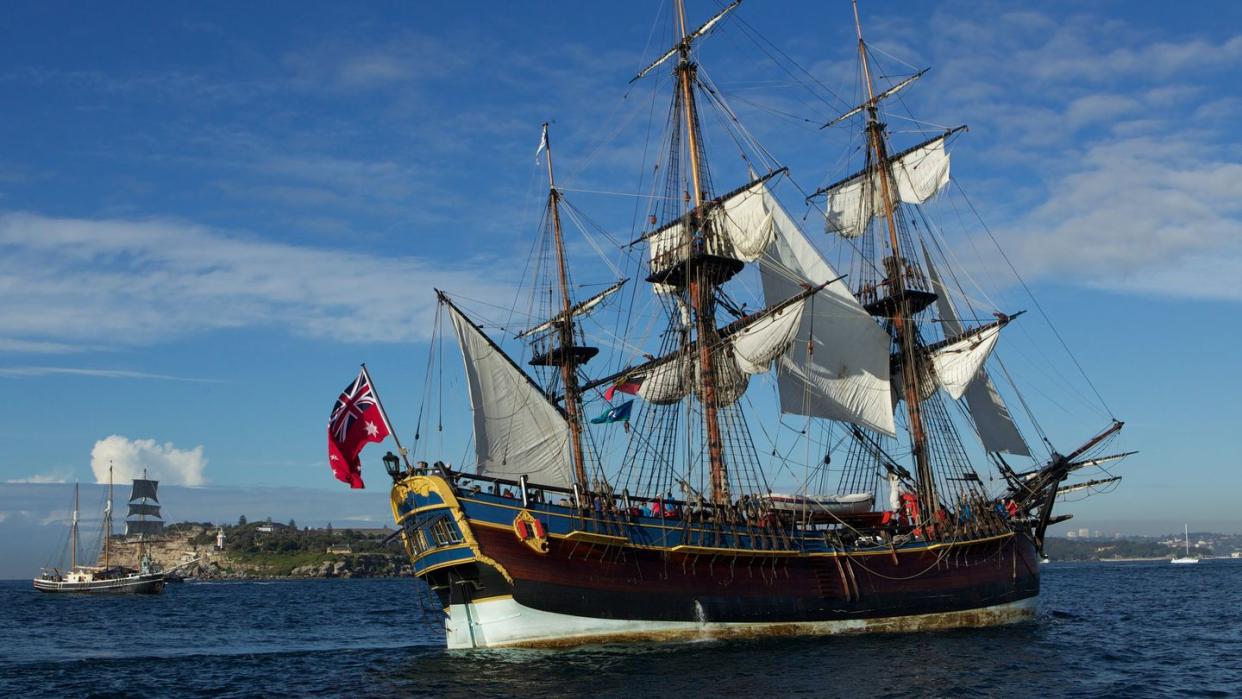A Shipwreck in Rhode Island Appears to Actually Be Captain Cook’s Long-Lost Ship

- Oops!Something went wrong.Please try again later.
Nearly two years after an Australian research team made the claim that a Rhode Island shipwreck was Captain Cook’s HMS Endeavour, the team says they have more evidence to back up their assertion.
A Rhode Island-based research group originally said it was too premature to call the shipwreck Cook’s vessel.
New findings regarding the pump well and bow further point to this ship in fact being HMS Endeavour.
Residents of New England and those with British ties are once again in a scuffle. This time, the debate continues over whether a shipwreck found off the coast of Rhode Island is really the HMS Endeavour—or Lord Sandwhich, as it was eventually renamed—a retrofitted coal ship made famous by Captain James Cook during his 1760s explorations.
The ship in question had been known as RI 2394 since it was discovered, and is one of five shipwrecks found just north of Goat Island in Newport Harbor that were deliberately sunk by the British during the American War of Independence. Archaeologists have studied the ship for decades, and in February of 2022, the Australian National Maritime Museum declared RI 2394 to be the HMS Endeavour. That announcement didn’t go over well with the Rhode Island Maritime Archeology Project, who quickly questioned the announcement.
Now, nearly two years later, the Australian group is back in the public eye and claiming that further evidence from the ship’s pump well and bow offers additional reasons to believe that RI 2394 is indeed Cook’s HMS Endeavour.
“Archaeology is an interesting process,” Kieran Hosty, Australian archeologist, said on the group’s website, “we call on the preponderance of evidence where we’ve got a whole series of things that tie into Endeavour. And so far, we’ve found lots of things that tick the boxes for it to be the Endeavour and nothing on the list which says it’s not.”
Work has been ongoing at the site since the late ‘90s. The team says that samples taken from the ship show that the timbers are British, the size is within millimeters of the Endeavour’s, and the length of the keel (from the end of the bow to the bilge pump) is within inches of survey measurements taken of Cook’s vessel taken by the British Royal Navy.
The two new pieces of evidence tie to that survey, which shows the position of the pump-shaft stump and pump-well partitions and lays out how they aligned perfectly with the shipwreck, according to The Guardian. And the scarph joint in the keel timber was also a match to the historical survey.
“The stem scarph is identical to what we know from the plans of Endeavour,” Australian marine archeologist James Hunter said on the group’s website. “It’s also a very unique feature. We’ve gone through a whole bunch of ships’ plans, lots of 18th century plans, and we can’t find anything else like it.”
Another anecdotal reason that experts continue to believe that this shipwreck is in fact the Endeavour is that the archaeological team found coal in the bottom inside of the hull, likely left over from when it was a cargo ship. “I think it’s just rattled down from when it was a collier and got stuck in the bilge,” Hunter told the Sydney Morning Herald.
Hunter and Hosty say that they will continue to put together a paper on the study and have it peer-reviewed before publishing, “but for now, there’s a lot of confidence that Endeavour has been finally found.”
While the Rhode Island Marine Archaeology Project hasn’t commented on the recent Australian announcement, the group’s executive director put out a scathing statement in 2022 that called the announcement a “breach of contract” between the two parties, which had been working together.
Even though the shipwreck site is consistent with what might be expected of the Endeavour, “there has been no indisputable data found to prove the site is that iconic vessel, and there are many unanswered questions that could overturn such an identification.”
Daryl Karp, the Australian National Maritime Museum chief executive, told the Sydney Morning Herald that along with the new findings, there’s been no evidence against the idea that this is the Endeavour.
Cook is famous for charting lands previously unknown to the British, including New Zealand, Australia, Newfoundland, and Hawaii. His was the first European ship to reach the eastern coast of Australia and sailed around all New Zealand. His coal ship was then used in the War of Independence, one of five British vessels scuttled in 1778 by the cutting of holes in their hulls, which is why it makes sense that the craft would have ended up in Rhode Island.
“We will never find anything on this site that screams Endeavour,” Hosty said on the website. “We will never find a sign saying, ‘Cook was here.’ We will never see a ship’s bell with Endeavour crossed out and Lord Sandwich inscribed on it.”
You Might Also Like

